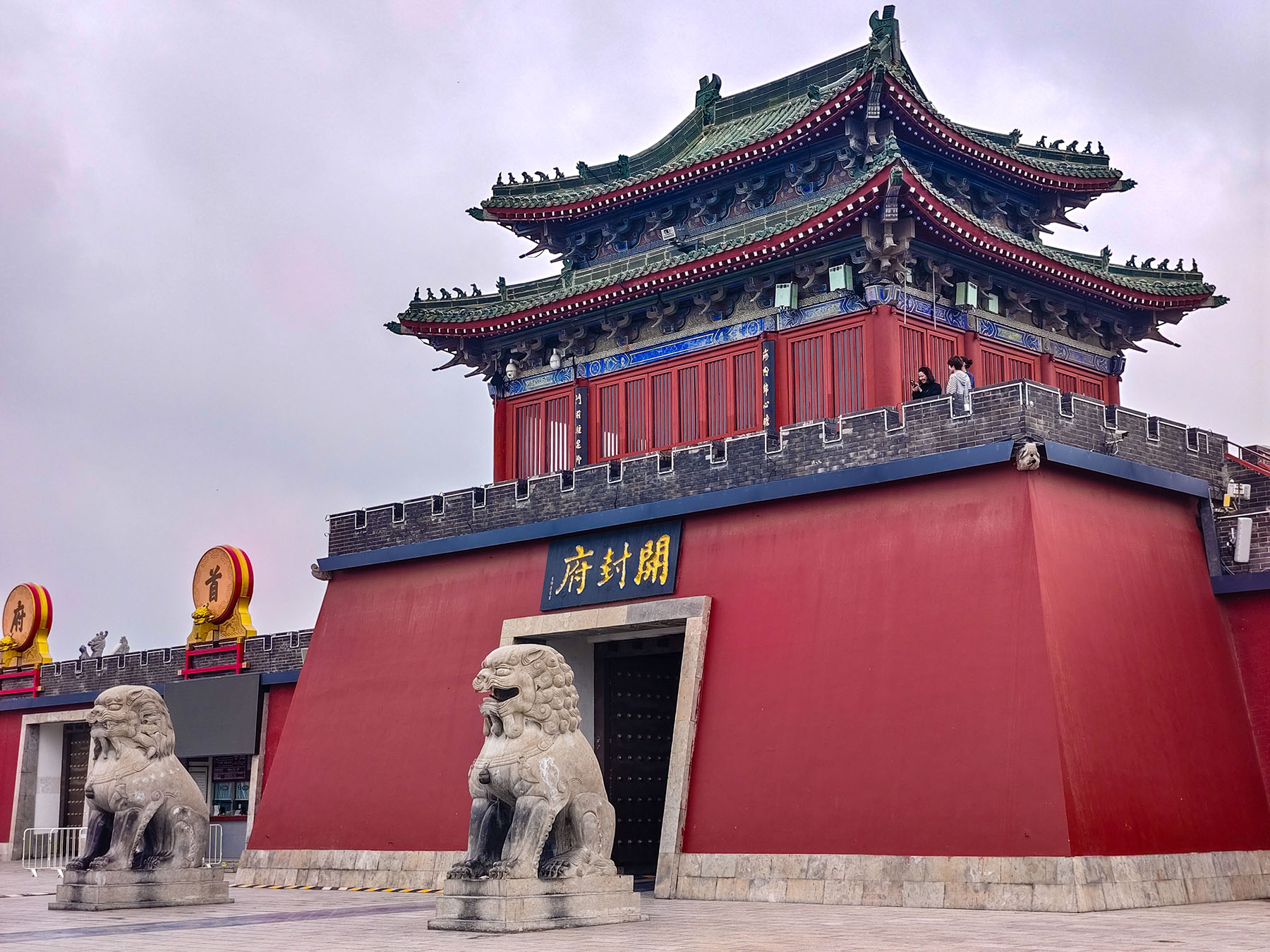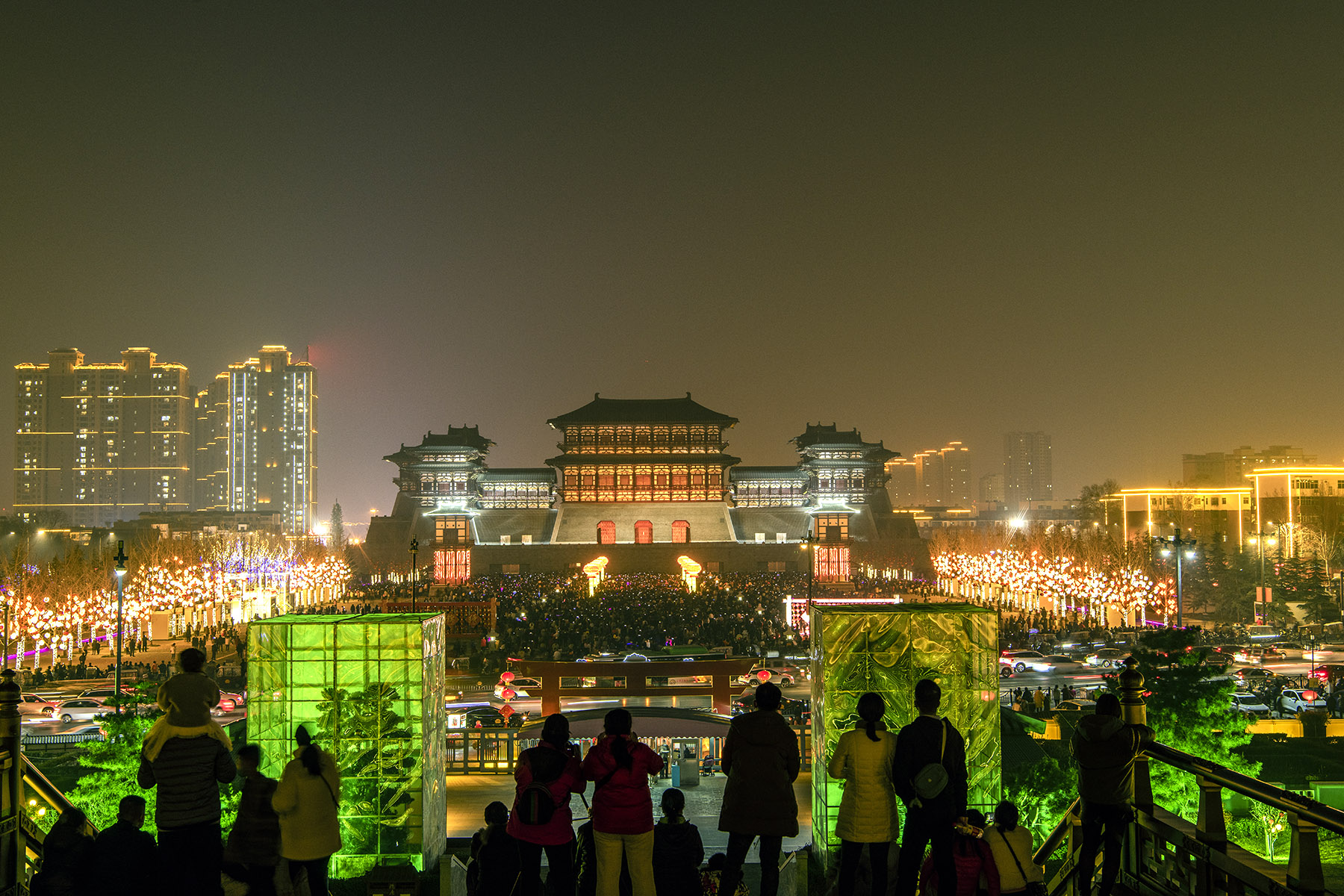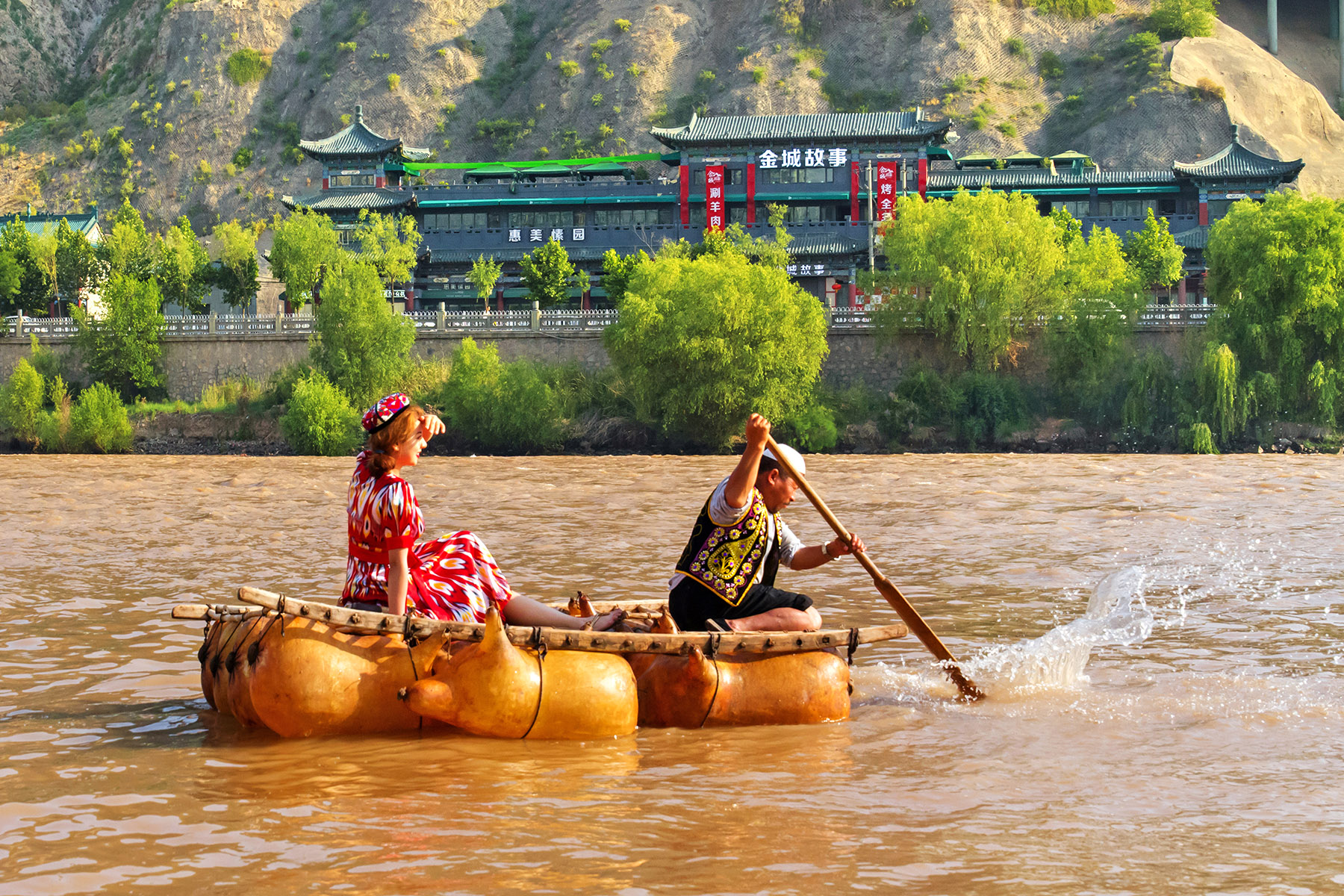Shifting waters meet at the striking confluence in Gansu, revealing ancient stories, quiet beauty, and fleeting moments of awe, Deng Zhangyu and Ma Jingna report.

The Yellow River, China's revered mother river, begins its journey on the snowcapped Qinghai-Tibet Plateau, flowing eastward with emerald clarity until it reaches the Loess Plateau in Gansu province. Here, at the threshold of this distinctive landscape, it meets the Taohe River, a major tributary, and undergoes a striking shift, taking on the golden hue that gives the river its name.
Just 90 minutes by road from Lanzhou, the capital of Gansu, lies the Liujiaxia Reservoir in Yongjing in Linxia Hui autonomous prefecture, where the two rivers converge with dramatically different qualities.
READ MORE: Civilization shaped by mighty waters
On summer mornings, when mist drifts across the basin, the Yellow River appears surprisingly serene — its broad expanse of clear water contradicting the common image of a turbulent, muddy flow. By contrast, the sediment-heavy Taohe River carries the unmistakable yellow hue of the Loess Plateau.
The confluence creates a striking natural spectacle: a sharp dividing line between clear and turbid waters, a phenomenon locals describe as the yuanyang huoguo, a traditional Chinese hot pot vessel divided into two compartments, each with its own color.
The best spot to enjoy this spectacle lies at the Benchigou viewing platform, a 15-minute drive from the confluence. Perched above the gorge, visitors enjoy a sweeping panorama: the Liujiaxia Bridge arching across the mountains, the merging currents of the two rivers flowing beneath, and the fiery-red Danxia formations stretching toward the horizon — a truly awe-inspiring vista.
In the distant crimson-hued mountains, a distinct dividing line is visible, where sediment from the riverbed meets soil carried from the Qinghai-Tibet Plateau. The erosion-carved gullies resemble wrinkles etched into the landscape, a testament to nature's relentless craftsmanship over millennia.
Nearby, a yacht marina offers boat tours through the gorge's striking scenery. The hour-long journey takes visitors directly past the point where the two rivers meet, allowing close-up views of the water's transition from green to yellow.
Along the way, travelers can encounter the extraordinary Bingling Stone Forest, a unique landscape where towering rock formations create a surreal scene.


The stone forest is renowned for its diverse pillars, peaks and walls shaped by long-term weathering and erosion. Many naturally formed pillars and rocks take on imaginative silhouettes, such as animals, human figures and architectural structures, inspiring people to craft stories as they drift past.
As the yacht glides through this narrow stretch, the waterway tightens, leading deep into the gorge. Upon disembarking, visitors discover a surprising cultural treasure: the Bingling Temple Grottoes, carved into the cliffs and housing a rich collection of Buddhist art. The site contains 216 caves, hundreds of statues and numerous murals spanning multiple dynasties.
As visitors walk deeper into the cliffside complex, the true marvel reveals itself: the main statue of Bingling Temple — a 27-meter-tall Buddha carved into the mountain during the Tang Dynasty (618-907).
The sheer scale of the statue, framed by weathered sandstone grottoes, stops travelers in their tracks. Sunlight filters into the canyon, illuminating the Buddha's serene countenance, which has gazed upon the Yellow River for over a millennium.
High in the cliffs, the caves overlook the Buddha statue from a vantage point 40 meters above the riverbed. Visitors reach them via a series of wooden staircases climbing alongside the statue.


Yet, the Yellow River's wonders extend far beyond Linxia's confluence and grottoes. As the river continues eastward, it slices through the arid landscapes of Baiyin, a city about 200 kilometers away, where another geological masterpiece awaits — the Yellow River Stone Forest, a national geological park.
Here, the landscape shifts from Linxia's water-sculpted limestone to vast, wind-carved pillars rising from the desert. It's surrounded by rolling hills, desert stretches and the constant presence of the Yellow River's winding ribbon.
From Baiyin, an hour's drive takes travelers to the geopark, where scenic shuttles transport visitors deep into the canyon.
On both sides, clusters of stone pillars soar skyward, ranging from dozens of meters to over 100 meters in height. The tallest reach 200 meters — equivalent to a 70-story building — creating an exceptionally dramatic landscape.
At the Yinmagou gully, explorers can either ride through the 4.5-kilometer canyon to observe the diverse stone pillars carved by the Yellow River and desert winds, or climb to a secondary viewing platform for a full, uninterrupted view of the stone forest.

A walk of 1,200 meters leads to the summit of the scenic area, where visitors are rewarded with a sweeping aerial view of the stone forest. Standing here, one is immediately humbled by nature's grand theater.
Countless stone pillars erupt from the earth like a petrified army, their rugged silhouettes stretching to the horizon in chaotic perfection.
From this height, the stone forest resembles a sprawling, forgotten city built by giants — or perhaps a geological archive frozen in spectacular disorder. It's a moment that silences the mind; the immensity feels both majestic and mysterious, as if Earth has chosen to reveal one of its most guarded secrets.
After drinking in these vast natural wonders, visitors can add a final rush of adventure — the iconic sheepskin raft ride along the Yellow River.
For centuries, these buoyant vessels served as the primary mode of transport across the river's upper and middle reaches, where rugged terrain made land travel difficult. Each raft is built from about a dozen whole sheepskins, inflated like air pillows and tightly bound to a sturdy floating platform.


A single raft can accommodate up to six passengers — always with life jackets, because even on calm days, the river's swift current poses a thrilling challenge.
A sudden tilt or unexpected wave can send water splashing over the raft, making an accidental dip into the river a possibility that only the boldest embrace.
In Lanzhou, a city divided by the Yellow River, a 15-minute drift on a sheepskin raft has become known among locals as "the brave one's game". In fact, watching adventurers bob along the waves has itself become a lively pastime — spectators gather along the riverbanks, cheering, laughing and snapping photos as riders cling to their rafts, caught between excitement and fear.
ALSO READ: Journey through time, stars and flavors
As visitors drift downstream, Lanzhou's riverside scenery unfolds like a living scroll. Tea drinkers wave from wooden verandas and anglers nod from the shore. When a stray wave leaps onto the raft, riders may even catch a faint taste of the Yellow River's mineral-rich silt — an unexpected but undeniably authentic souvenir.
And so the journey along China's mother river concludes not just with awe-inspiring landscapes but with a blend of adventure, serenity and memory. Part spectacle, part challenge, part poetry — wholly unforgettable.
Contact the writers at dengzhangyu@chinadaily.com.cn


